Search
07467 Effect of Mo Addition on the Oxidation Behavior of Fe-25Cr-20Ni Alloy in a Water Vapor Containing Atmosphere
Also Purchased
07477 Electrochemical and SCC Behavior of Highly Alloyed Austenitic Stainless Steels in Different Chloride Containing Media
Product Number:
51300-07477-SG
ISBN:
07477 2007 CP
Publication Date:
2007
$20.00
07450 FAILURE ANALYSIS AND INVESTIGATION METHODS FOR BOILER TUBE FAILURES
Product Number:
51300-07450-SG
ISBN:
07450 2007 CP
Publication Date:
2007
$20.00
07462 High Temperature Performance of Corrosion Resistant Boiler Weld Overlay Materials
Product Number:
51300-07462-SG
ISBN:
07462 2007 CP
Publication Date:
2007
$20.00




